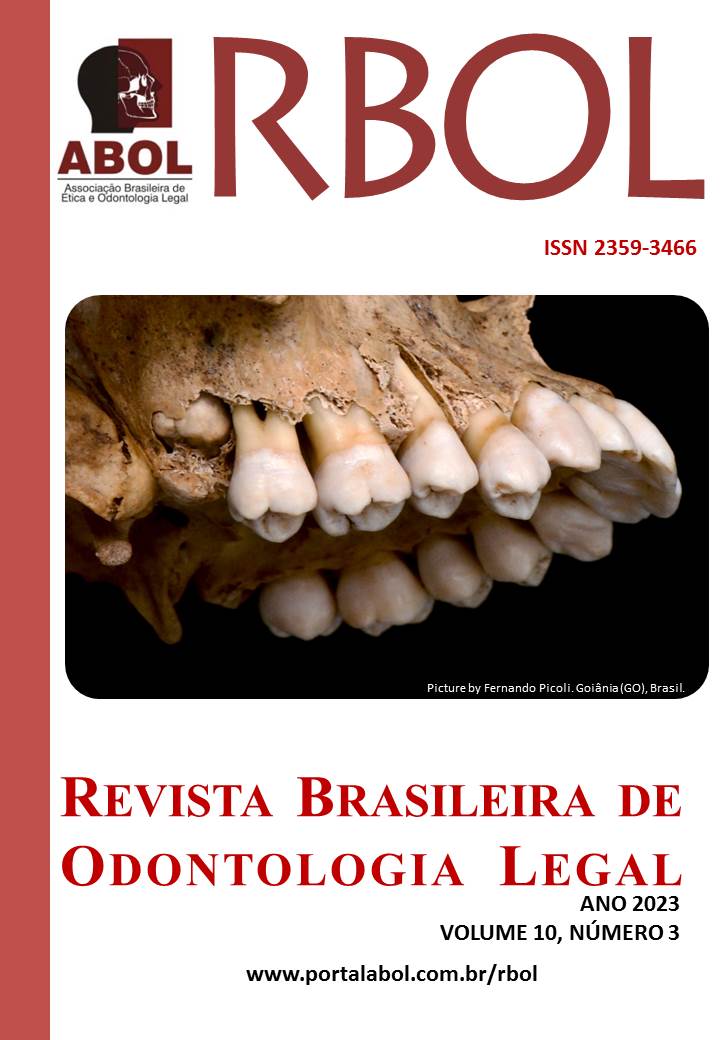Forensic Dentistry in Higher Education in the State of Paraná
DOI:
https://doi.org/10.21117/rbol-v10n32023-493Keywords:
Forensic dentistry, Ethic, Education in dentistryAbstract
With the growing claims for damages and infractions committed in the dental field, legal dentistry must be addressed in Dental Schools for dentists to exercise their profession safely. The present study analyzed the curricula of Dentistry courses at colleges in the state of Paraná, assessing whether they are adequate to the teaching guidelines of Forensic Dentistry, proposed by ABOL and ABENO. Descriptive document analysis research was carried out, and data collected from HEIs in Paraná was registered in the e-MEC. The survey of information took place between June and August 2021. The curricula were analyzed in comparison with the National Curriculum Guidelines and with the ABENO and ABOL guidelines. All 30 HEIs that provide complete information for study have in their curriculum at least one discipline related to the content of Forensic Dentistry, with an average workload for Forensic Dentistry of 60.1 hours. Of these, 26 (86.7%) HEIs offer only one course in Forensic Dentistry. West Paraná (69h) and the metropolitan region of Curitiba (68.9h) obtained the highest average hours for the discipline and Southwest Paraná had the lowest (39.5h). HEIs in the State of Paraná offer Forensic Dentistry content with a workload below what the ABOL/ABENO guidelines recommended. The vast majority of HEIs offer only one discipline that addresses Forensic Dentistry content.
Downloads
Published
Issue
Section
License
Os autores deverão encaminhar por email, devidamente assinada pelos autores ou pelo autor responsável pelo trabalho, a declaração de responsabilidade e transferência de direitos autorais para a RBOL, conforme modelo abaixo.
DECLARAÇÃO DE RESPONSABILIDADE E TRANSFERÊNCIA DE DIREITOS AUTORAIS
Eu (Nós), listar os nomes completos dos autores, transfiro(rimos) todos os direitos autorais do artigo intitulado: colocar o título à Revista Brasileira de Odontologia Legal - RBOL.
Declaro(amos) que o trabalho mencionado é original, não é resultante de plágio, que não foi publicado e não está sendo considerado para publicação em outra revista, quer seja no formato impresso ou no eletrônico.
Declaro(amos) que o presente trabalho não apresenta conflitos de interesse pessoais, empresariais ou governamentais que poderiam comprometer a obtenção e divulgação dos resultados bem como a discussão e conclusão do estudo.
Declaro(amos) que o presente trabalho foi totalmente custeado por seus autores. Em caso de financiamento, identificar qual a empresa, governo ou agência financiadora.
Local, data, mês e ano.
Nome e assinatura do autor responsável (ou de todos os autores).

